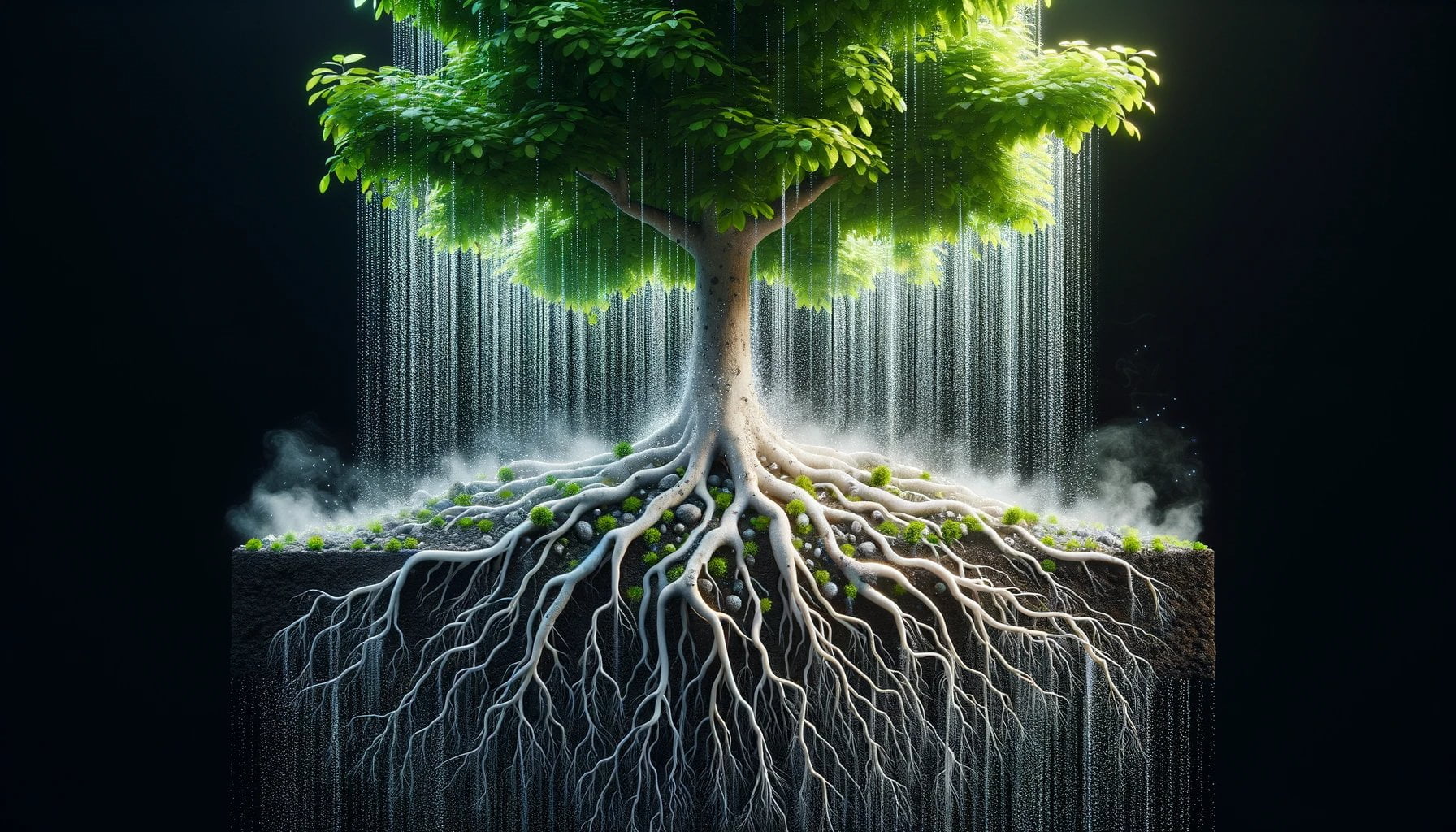Discover the hidden secrets behind the phenomenon of transpiration and its crucial role in maintaining the water balance of plants. In our article, “The Significance of Transpiration: Understanding Plant Water Balance,” we delve deep into the world of plant physiology to unravel why transpiration occurs. Through a captivating exploration of water uptake, photosynthesis, and environmental factors, we shed light on the underlying reasons behind this mysterious process. Join us as we unravel the ecological implications of transpiration and how plants strive to maintain their water equilibrium in various environments.
Why does transpiration occur?
Transpiration, the process by which plants lose water vapor through their leaves, plays a crucial role in maintaining their water balance and overall health. Understanding the reasons behind transpiration is essential for comprehending how plants interact with their environment. So, why does transpiration occur?
1. Water regulation and excess elimination
Plants have an exceptional ability to take in more water than they need at a given time. This surplus water is then released through transpiration. By doing so, plants eliminate the excess water and keep their hydration levels within a tolerable range. Transpiration acts as a mechanism for maintaining the delicate balance between water intake and loss.
2. Facilitating photosynthesis
Transpiration functions as a gateway for plants to access carbon dioxide, a crucial ingredient for photosynthesis. As water is removed from the plant through transpiration, carbon dioxide can more easily diffuse into the leaf, driving the photosynthetic process. In this way, transpiration ensures that plants have an adequate supply of carbon dioxide for energy production and growth.
3. Aiding temperature regulation
Plants rely on transpiration to cool themselves, just like humans sweat to cool down. As water evaporates from the leaves, heat energy is carried away, resulting in a cooling effect. This process is particularly important for plants growing in hot environments or basking under intense sunlight. Transpiration helps regulate their temperature and prevents overheating, enhancing their ability to thrive in diverse ecological conditions.
4. Water transport through the plant
Transpiration plays a vital role in the movement of water within plants. Through a phenomenon known as the transpiration stream, water molecules in the roots create a continuous column of water, drawn upwards through the stem and into the leaves. This upward movement of water is possible due to the strong cohesion between water molecules, facilitated by hydrogen bonding. Transpiration acts as the driving force behind this movement, ensuring the adequate distribution of water and essential nutrients to all parts of the plant.
5. Slowing down under humid conditions
During transpiration, the air surrounding the leaf becomes increasingly humid as water vapor is released. This humidity reduction creates a decrease in the difference in water potential between the leaf and the atmosphere. Consequently, transpiration slows down as the moisture gradient becomes less steep. This mechanism helps conserve water during times of high humidity or when the plant is under water stress.
6. No active energy requirement
Unlike many other plant processes, transpiration is a passive process that does not require the expenditure of metabolic energy in the form of ATP. It occurs due to the natural properties of water, including cohesion, adhesion, and evaporation. This energy-efficient mechanism allows plants to utilize their resources effectively.
Now that we understand the reasons behind transpiration, we can appreciate its importance in plant physiology and ecological dynamics. This process enables plants to regulate water, acquire necessary nutrients, and maintain their temperature, all ultimately contributing to their survival and success in various environments. By unraveling the mysteries of transpiration, we gain insights into the remarkable ways in which plants adapt and thrive in a changing world.
Transpiration is an essential component of the water cycle, playing a crucial role in the movement of water from plants to the atmosphere. Understanding the process of transpiration in the water cycle is key to comprehending the intricate workings of this natural phenomenon. To delve deeper into this topic and explore the fascinating relationship between transpiration and the water cycle, click here. This link will transport you to a world of knowledge where you can unravel the mysteries of how water moves through plants and its impact on the overall ecosystem. So, do not miss this opportunity to expand your understanding of transpiration and its significance in the water cycle!
Role of Transpiration in Plant Physiology
Transpiration, the process by which plants lose water vapor through their leaves and other aerial parts, plays a crucial role in maintaining their overall water balance. It is a vital mechanism that helps plants regulate various physiological functions and adapt to their environments.
The Water Balance: Uptake and Release
Plants absorb water from the soil through their roots, which then moves upward through a network of vessels and cells called xylem. This water is critical for carrying essential nutrients and minerals to different parts of the plant. However, excess water can be harmful and can lead to root rot or inhibit proper nutrient uptake. This is where transpiration comes into play. It acts as a natural cooling system that releases excess water back into the atmosphere, keeping plants in optimal condition.
Facilitating Photosynthesis
One of the key roles of transpiration is facilitating photosynthesis, the process by which plants convert sunlight into energy. During transpiration, water evaporates from the leaves, creating a slight vacuum that pulls water up from the roots through the xylem. This upward movement of water helps transport carbon dioxide (CO2) from the atmosphere into the leaves, which is necessary for photosynthesis to occur. In this way, transpiration supplies water for photosynthesis, sustaining plant growth and productivity.
Temperature Regulation
Transpiration also plays a vital role in regulating plant temperature. The evaporation of water from the leaves cools their surfaces, similar to how sweating cools our skin. This cooling effect is particularly important in warm environments, where excessive heat can damage or impede plant function. Through transpiration, plants can maintain a stable leaf temperature, preventing dehydration and heat stress.
Nutrient Distribution
Besides regulating water balance, transpiration is crucial for the movement and distribution of nutrients within a plant. As water evaporates from the leaves, it exerts a pull on adjacent water molecules, creating a continuous flow of water through the xylem vessels. This flow helps transport essential minerals and nutrients from the roots to the rest of the plant. Without transpiration, nutrient uptake and distribution within the plant would be significantly impaired.
Adaptation to Environmental Conditions
Transpiration rate is influenced by various environmental factors, including temperature, humidity, wind speed, and light intensity. In dry or arid conditions, plants can regulate their transpiration rates to minimize water loss and conserve this precious resource. On the other hand, in more humid conditions, transpiration may slow down since there is less need for evaporative cooling. This ability to adapt to changing environmental conditions is key for plant survival.
The Passive Nature of Transpiration
It’s important to note that transpiration is a passive process that does not require active energy from the plant. It occurs due to a combination of physical factors, such as the cohesion and adhesion of water molecules and the presence of stomata (small openings in the leaf epidermis). Stomata act as gatekeepers, controlling the rate of transpiration and minimizing water loss during unfavorable conditions.
In conclusion, transpiration, despite being an essential process in plants, is often overlooked in discussions about plant physiology. Yet, understanding the role of transpiration in plant water balance is crucial for comprehending how plants adapt, grow, and thrive. It helps maintain the water equilibrium, regulates temperature, supports photosynthesis, and facilitates nutrient distribution within the plant. Transpiration truly exemplifies the intricate and harmonious interplay between plants and their environment, ensuring their survival and ecological significance.
Ecological Implications of Transpiration
Transpiration is a fundamental process in plant physiology that has significant ecological implications. It plays a crucial role in maintaining plant water balance, regulating temperature, and influencing the environment. Understanding the ecological implications of transpiration is essential for comprehending how plants adapt, grow, and thrive in various habitats.
1. Transpiration and Climate Regulation
Transpiration is intimately linked to climate regulation. When plants release water vapor through transpiration, it contributes to the moisture content in the atmosphere. This increased humidity can lead to the formation of clouds and precipitation. The transpired water above forest canopies, for example, can induce cloud cover and rain, further cooling the space below. Thus, transpiration not only helps plants stay cool but also cools the environment and contributes to local climate moderation.
2. Water Cycle and Precipitation Patterns
Transpiration is a crucial component of the water cycle. Through transpiration, plants absorb water from the soil through their root hairs, and this water is then transported to the leaves. As the water is released into the atmosphere through transpiration, it increases the water vapor content. This, in turn, leads to the formation of clouds and precipitation. Therefore, transpiration contributes to the overall distribution of water resources and influences precipitation patterns in ecosystems.
3. Carbon Dioxide Exchange and Photosynthesis
One of the primary ecological implications of transpiration is its role in facilitating photosynthesis. Transpiration creates a negative pressure gradient that helps pull water and nutrients from the roots to the leaves. At the same time, it allows carbon dioxide to enter the plant through specialized pores called stomata. This exchange of gases is vital for photosynthesis, where carbon dioxide is converted into carbohydrates, providing energy for plant growth. Thus, transpiration ensures the continuous supply of carbon dioxide necessary for plant productivity and the maintenance of ecological balance.
4. Nutrient Uptake and Distribution
Transpiration not only transports water upward but also aids in the movement and distribution of nutrients within the plant. As water moves through the plant, minerals and other essential nutrients dissolved in the water are transported to various tissues. This nutrient transport supports growth, cellular functions, and overall plant health. Therefore, transpiration plays a critical role in nutrient uptake and distribution, ultimately influencing ecosystem productivity and functioning.
5. Environmental Adaptability
Plants can regulate their transpiration rates to adapt to different environmental conditions. Factors such as temperature, humidity, wind, and light intensity can influence transpiration rates. Under conditions of high humidity or water stress, transpiration slows down, conserving water to prevent dehydration. In contrast, in dry and hot environments, plants increase their transpiration rates to cool down and actively take up water. This adaptability allows plants to survive and thrive in diverse habitats, contributing to ecological sustainability.
6. Transpiration and Water Conservation
While transpiration is crucial for plant functioning, it also leads to water loss. Only a small percentage of the water taken up by plants is used for photosynthesis and growth, while the majority is lost through transpiration. This excessive water loss can be seen as a downside and a challenge for plants, particularly in water-limited environments. However, it is important to recognize that transpiration is an unavoidable process necessary for plant survival. Through transpiration, plants maintain their water equilibrium, regulate temperature, and enable nutrient uptake. Therefore, the ecological implications of transpiration need to be understood in the context of overall plant health and ecosystem functioning.
In conclusion, transpiration not only regulates plant water balance but also has significant ecological implications. It influences climate regulation, precipitation patterns, carbon dioxide exchange, nutrient uptake and distribution, environmental adaptability, and water conservation. Understanding and appreciating the ecological implications of transpiration is essential for managing and conserving natural ecosystems, as well as for developing sustainable agricultural practices. With its far-reaching effects, transpiration shines a light on the intricate balance between plants, the environment, and the overall functioning of our ecosystems.
Table: Key Ecological Implications of Transpiration
| Ecological Implications | Explanation |
|---|---|
| Climate Regulation | Transpiration contributes to local climate moderation through the formation of clouds and precipitation. |
| Water Cycle and Precipitation Patterns | Transpiration influences the overall distribution of water resources and precipitation patterns in ecosystems. |
| Carbon Dioxide Exchange and Photosynthesis | Transpiration facilitates the entry of carbon dioxide into plants for photosynthesis. |
| Nutrient Uptake and Distribution | Transpiration aids in the movement and distribution of essential nutrients within the plant. |
| Environmental Adaptability | Plants can regulate their transpiration rates to adapt to different environmental conditions. |
| Transpiration and Water Conservation | Transpiration is necessary for water equilibrium in plants, despite leading to water loss. |
FAQ
Q: What is transpiration?
A: Transpiration is the process by which plants release excess water through their leaves, cooling themselves and the surrounding air.
Q: Why does transpiration occur?
A: Transpiration occurs because plants take in more water than they actually need at a given time. It is a way for plants to get rid of the excess water.
Q: How does transpiration benefit plants?
A: Transpiration helps maintain the water balance in plants by losing water. It eliminates excess water absorbed by roots and releases it back into the atmosphere. Additionally, transpiration acts as a natural cooling system and helps regulate temperature in plants.
Q: Is transpiration important for plant growth?
A: Yes, transpiration is essential for plant growth. It aids in the conduction of water and minerals to different plant parts, supplies water for photosynthesis, and helps maintain cell turgidity.
Q: What factors affect transpiration rates?
A: Several environmental factors can affect transpiration rates, including temperature, humidity, wind, and light intensity. These factors can either speed up or slow down the rate of transpiration.
- Amazing March Fun Facts: Unveiling History & Celebrations - April 15, 2025
- Master how to write height: A complete guide - April 15, 2025
- How High Are Your Standards Test: Find Your Perfect Match Now - April 15, 2025



















